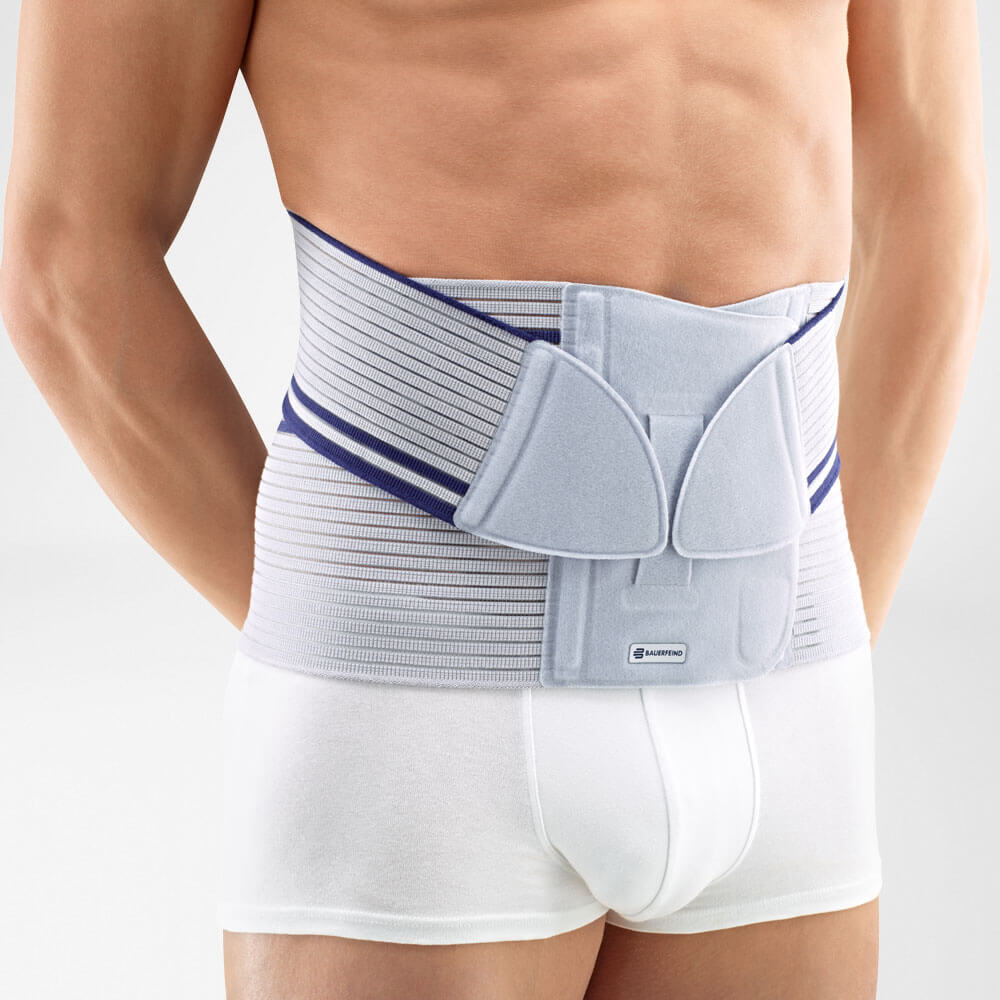Lumbago: Chronic Lower Back Pain

The lumbar region of the back is instrumental in providing stability and facilitating the transfer of power to the lower body. It allows for complex movements like bending, walking and running. Overexertion and poor proprioception often lead to patients experiencing pain in the lower back area, also known as lumbar pain.
In mild cases, targeted treatment can lead to complete recovery. However, long term neglect and degeneration can lead to chronic pain in the lower back. Chronic pain is fairly common and affects people of all ages.
Low Back Pain Causes
There are several factors that can cause pain in the lower back. Some of them include:
- Overexertion and stress
- Poor and unhealthy proprioception
- Lack of exercise and being overweight can lead to excessive stress on the lumbar region.
- Overworking or performing high-intensity physical activity
- Injury or accident trauma
- Lumbago – pain in the surrounding muscles and joints of the lower back
Long term neglect and degeneration of the lower back can lead to chronic lower back pain. A patient can sometimes experience pain for more than 12 consecutive weeks.
Symptoms Of Chronic Lower Back Pain
Chronic pain conditions have a range of symptoms, depending on the severity of the degeneration. Some of the most commonly known symptoms include:
- Pain in the lower back, i.e. sharp, stinging and intense pain in the lower section of the spine.
- Severely restricted mobility- where paralysis and numbness in the legs may be experienced, and often it may get too difficult to stand up which results in a drop in life quality.
- Chronic pain lasting more than 12 weeks, resulting in the development of persistent pain, also referred to as “pain memory”, where symptoms of discomfort and pain remain even if the root causes are relieved.
- Tense muscles in the entire lumbar spine area, which add rigidity to movement.
Immediate medical treatment is advised to manage the condition and prevent further degeneration. The earlier the diagnosis, the better the prognosis.
Diagnosis Of Chronic Lower Back Pain
A professional medical practitioner is the best point of contact for an effective diagnosis and treatment plan. The physician begins with complete patient history and a physical examination to identify the stressors. Sophisticated imaging technology, including X-Rays, CT scans and MRI’s, can be used to determine the extent of damage and progression of the lower back pain.
Chronic Lower Back Pain (Low Back Pain) Treatment
Treatment for chronic lower back pain, revolve around managing the root cause of pain and providing relief from symptoms. An effective guide to follow involves:
Lifestyle Changes

Lifestyle changes in the early stages of the condition can help slow down the progression. Avoiding stressful activities, such as physically intensive work, training and lifting heavy loads, can be effective measures a patient can implement in their daily lives.
Taking breaks to stretch between long hours at the desk can help stretch the muscles and also provide some relief from stress. Reducing body weight and obesity can further reduce the strain on the back.
Rehabilitation And Physiotherapy
Regulated physiotherapy exercises help with targeted muscle training and is a proven effective treatment path. Prescribed exercises can help promote the reorganisation of the muscles and are the most effective option to curb the disease. Encouraging healthy proprioception and strengthening of the muscles in the back helps prevent long term degeneration and relieves lower back pain.
Prescribed Painkillers
Prescribed painkillers, including Ibuprofen and Panadol, are often used to alleviate pain and discomfort in patients. In cases of inflammation in the back, anti-inflammatory medication is also recommended however as with many medications, tolerance may occur where the effectiveness of the drugs decrease as well as other potential side effects.
Medical Back Braces

It is highly recommended that ample support to the back is provided through the use of a medical back brace. The targeted compression and support that braces provide can help boost stability and muscle activation and reduce the possibility of further injury. Additionally a comfortable and well designed back brace should also reduce the need for reliance on painkillers with medical studies* showing by up to 52% as well as 4.8 fewer sick days due to back pain.
Wearing a Bauerfeind back support, like the LumboTrain and LumboLoc, can be instrumental in treatment as it provides enhanced stability, proprioception and medical-grade compression. This advanced technology cannot be found in simple neoprene braces and has proven to be more effective.
Surgical Intervention
Operative surgery is considered only in extreme cases where symptoms are persistent, and all conservative treatments have been exhausted. In chronic conditions of bone growth, surgery might be needed to restore mobility within the back.
What Is The Best Back Brace To Get Rid Of Chronic Lower Back Pain?

Medical back braces can help prevent the development of lumbar pain, as well as effectively manage the pain.
Bauerfeind’s LumboTrain Back Support features a massaging gel pad which relieves pain in the lower back area. Anatomically contoured to the spine’s natural curvature, the LumboTrain helps with postural adjustment and provides all-day comfort. The medical-grade compression engineered into the LumboTrain’s material boosts blood circulation, thus improving prognosis.
For patients with advanced symptoms, the LumboLoc helps straighten the lumbar spine and relieves stress from the vertebral discs. The brace incorporates individually adjustable aluminium rods that provide the lower back with added stability and support. The gentle, breathable material can be easily adjusted to fit the needs of a patient’s daily life.















